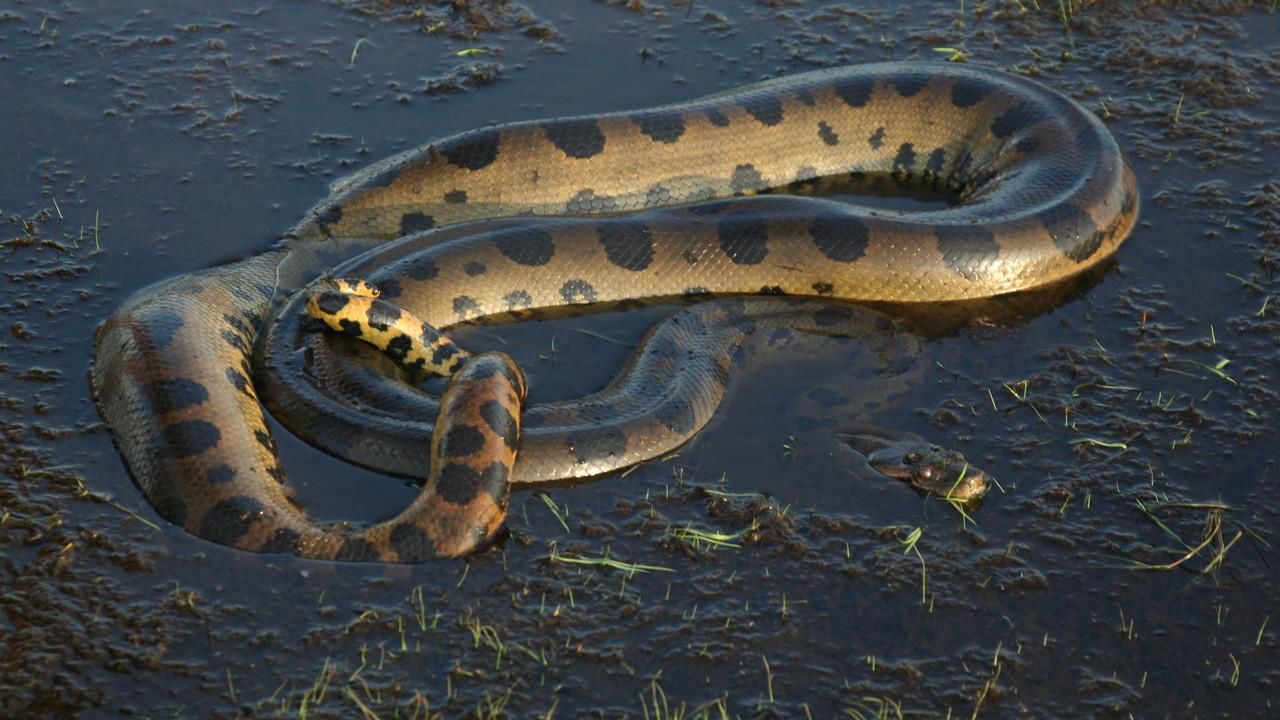
The head of an eastern rat snake is wider than the neck and the rest of the body. They have shiny black scales on their back and a light colored belly, and their throat and chin are white. Two subspecies of the green anaconda are recognized: E. Eastern rat snakes, formerly known as black rat snakes, are large non-venomous snakes between 3.5 and 7 feet (one and two meters) long.

The body color of the anaconda is olive green with overlaid black colored blotches throughout the length of the snake. Jesús Antonio Rivas, an anaconda specialist. The longest known specimen of this species was a 17.09 feet long green anaconda encountered by Dr. There are, however, reports of anacondas as long as 35 to 40 feet but substantial evidence is still lacking. The snake attains a length of about 17.1 feet and weighs between 30 to 70 kg.

It is one of the longest and heaviest species of snakes inhabiting the world today. The color pattern of this snake consists of an olive green background overlaid with black blotches along the length of the body. Green Anaconda -Īlso known as the water boa or the common anaconda, the green anaconda (Eunectes murinus) is a South American non-venomous species of boa. Just like all other anacondas and many boas in general, the dark-spotted anaconda is semi-aquatic.

However, the opposite is also true, and humans are the biggest threats to the survival of these snakes since the anacondas are extensively hunted for their skin. These snakes are reputed for being unpredictable in nature and could be dangerous to humans. These snakes are classified as a generalist feeder with a wide prey base. The general colour is dark olive- brown, with large oval black spots arranged in two alternating rows along the back, and with smaller white-eyed spots along. Within its habitat, the yellow anaconda prefers to inhabit swamps, marshes, slow-moving rivers and streams.


 0 kommentar(er)
0 kommentar(er)
